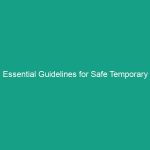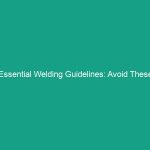Introduction
Good morning team! Today, we’re diving into an essential topic that affects our Safety and efficiency on the job: Essential Seal Checks. Understanding and implementing proper seal checks are crucial for ensuring that our equipment operates safely and effectively, preventing accidents and ensuring a safe working Environment.
With the right knowledge and practices, we can minimize risks and protect ourselves and our colleagues. So, let’s explore why seal checks are vital and how we can incorporate them into our daily routines.
Understanding Essential Seal Checks
So, what exactly are Essential Seal Checks? In simple terms, seal checks are Procedures that ensure seals and closures on equipment, containers, and systems are intact and functioning properly. These checks are vital in preventing leaks, contamination, and other Safety Hazards.
Seal integrity impacts our daily operations significantly. For instance, compromised seals can lead to dangerous leaks of chemicals or gases, affecting not only the equipment but also the health and safety of everyone in the vicinity. A common misconception is that seal checks are only necessary for high-risk environments; however, they are essential in all work settings where equipment is used.
Key Hazards, Risks, and Safety Considerations
Identifying specific hazards associated with seal integrity is crucial. Here are a few risks we should be aware of:
- Chemical Leaks: If seals on chemical containers are compromised, it can lead to toxic exposure.
- Equipment Failure: Worn or damaged seals can result in equipment malfunction, causing accidents.
- Environmental Contamination: Leaks can also lead to environmental harm, impacting the surrounding community and ecosystems.
Ignoring these safety protocols can have real-world consequences, including injuries, health issues, and even legal ramifications for our organization. It’s essential to understand that safety isn’t just a priority—it’s a responsibility we all share.
Best Practices, Procedures, & Actionable Advice
Now that we understand the importance of seal checks, let’s discuss some Best Practices and procedures that we can implement:
Step-by-Step Safety Procedures
- Visual Inspection: Regularly inspect seals for signs of wear, damage, or corrosion.
- Functional Testing: Test the seals under normal operating conditions to ensure they hold properly.
- Documentation: Keep a log of all inspections and findings to track seal integrity over time.
- Training: Ensure all team members are trained on how to conduct seal checks properly and understand their significance.
To illustrate, let’s consider a recent incident where a seal failure led to a hazardous chemical leak. The company faced not only severe operational downtime but also financial penalties due to regulatory non-compliance. By implementing thorough seal checks, this incident could have been avoided.
Regulations, Standards, and Compliance
Adhering to relevant safety Standards is critical. Organizations like OSHA (Occupational Safety and Health Administration) provide Regulations that guide us in maintaining seal integrity. Compliance with these standards not only protects our health but also safeguards the organization from legal issues and financial liabilities.
For instance, osha mandates that employers provide a safe working environment, which includes ensuring that all equipment is functioning correctly. Following these guidelines can significantly reduce workplace incidents, enhancing our overall safety culture.
Employee Engagement & Discussion
To foster a culture of safety, it’s important to engage everyone in the discussion. Here are a few questions to consider:
- What challenges have you encountered while performing seal checks?
- Can you share any experiences where seal integrity positively impacted safety?
- What improvements do you think we can implement in our current seal checking procedures?
Feel free to share your thoughts and experiences; your input is invaluable in enhancing our safety practices!
Conclusion & Key Takeaways
In summary, understanding and implementing Essential Seal Checks is crucial for maintaining a safe working environment. By regularly inspecting seals, adhering to safety regulations, and engaging in open discussions, we can significantly reduce risks and enhance our overall safety culture.
Remember, safety is a shared responsibility. Let’s prioritize it not just today but every day. Thank you all for your attention and commitment to ensuring a safer workplace!


